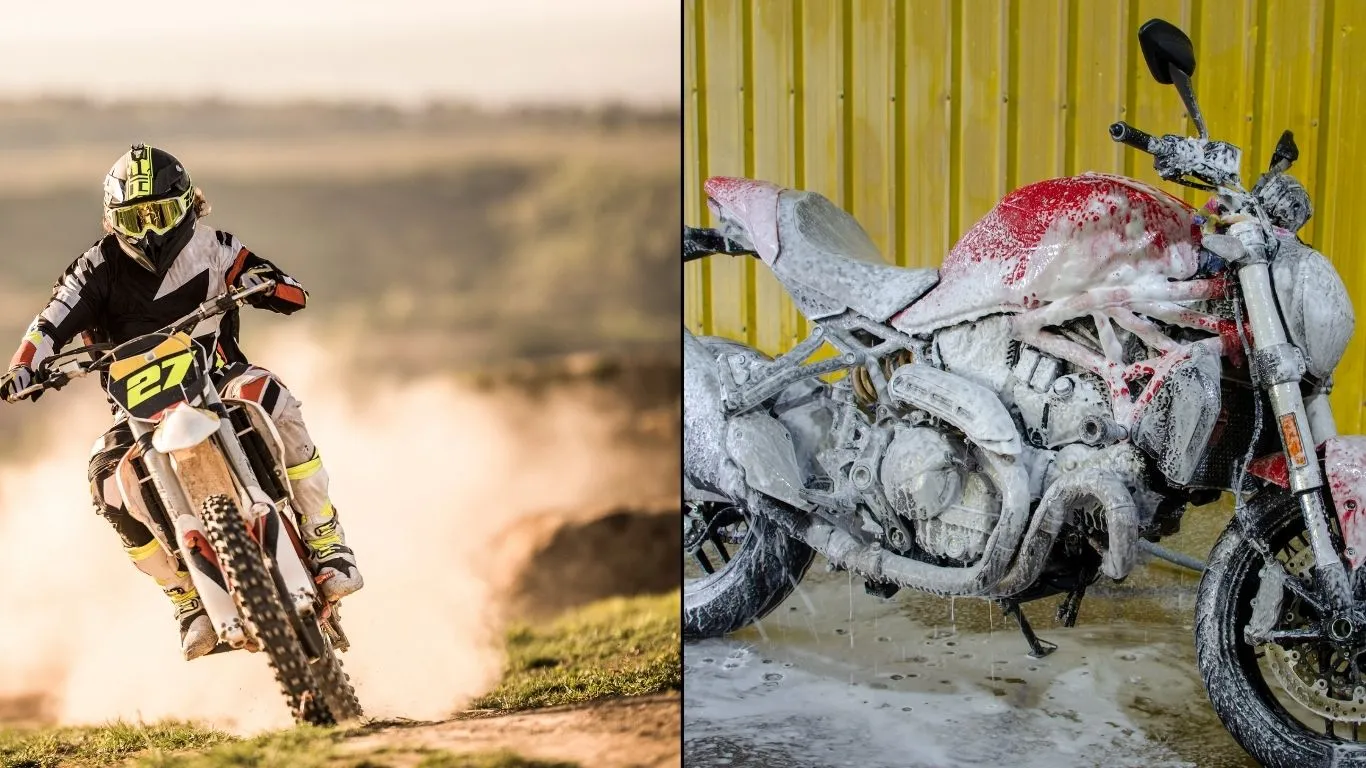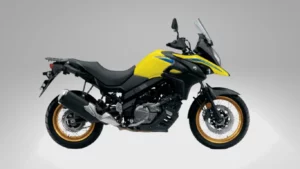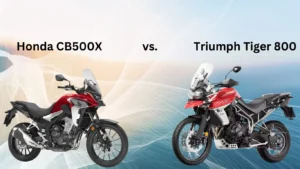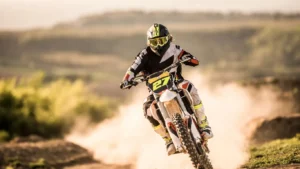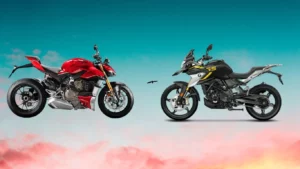Imagine you’re ready for an off-road adventure, handlebars in hand, the engine rumbling beneath you. Here’s the million-dollar question: “Should I go for a dirt bike or a motorcycle?” While it might seem like an easy choice, their off-road performance tells different stories. Both have their ups and downs. Let’s dig deeper into the world of dirt bikes and motorcycles to help you pick the right ride for your off-road adventures.
Both dirt bikes and motorcycles offer a unique form of enjoyment and thrill, but choosing between them might not be as simple as it sounds, especially where off-road performance comes into play. Let’s explore the intriguing world of these two popular rides!
Understanding the Basics: What Defines Off-Road Performance?
This comprehensive article lays out a detailed comparison between dirt bikes and motorcycles, specifically focusing on off-road performance. Whether you are an experienced rider or a newbie, you’ll find insightful knowledge to help you understand and appreciate the nuances between these two.
We navigate through the pros and cons of each and delve into their technical specifications—a one-stop shop for all your queries!
Setting the Scene: Terrain Challenges
Off-road riding is an adrenaline-pumping sport that involves navigating through unpredictable terrain and challenging environments. From rocky mountain trails to sandy deserts and muddy forests, the conditions are as diverse as they are challenging.
“Off-road riding is the ultimate test of balance, agility, and instinct. The bike’s features – its power delivery, throttle response, weight and suspension – all play significant roles in dictating how well it holds up against these tests.”
Enticing Elements: Dirt Bikes vs. Motorcycles
While there is a broad spectrum of vehicles suitable for off-road use, this article zeroes in on two popular choices: dirt bikes and motorcycles.
- Dirt Bikes: Light, nimble and powerful, these are designed specifically for off-road riding. They are faster and more agile, equipped with long suspension travel to handle jumps and bumps smoothly.
- Motorcycles: These are typically heavier with a more powerful engine and are generally used for on-road travel. However, with the right modifications, they can also be used for off-road adventures!
Under the Microscope: Analyzing Performance
It’s important to note that the same bike can perform differently depending on the rider’s skill and experience. Hence, this article doesn’t just rest on the technical differences; it also takes into account user experiences.
From experienced off-roaders to occasional adventure riders, their insights offer a broader perspective, bridging the gap between spec sheets and real-world experience.
Also read: Dirt Bike vs Motorcycle: 6 Essential Facts You Should Know
Diving into the Off-Road Anatomy of Dirt Bikes
Let’s deep dive into the construction and design features of dirt bikes that make them a desirable choice for many off-road adventurers.
The Engine: A Powerhouse on Two Wheels
The heart of any dirt bike is its engine. Typically, these engines are compact, lightweight and deliver a lot of power.
Most common dirt bikes use two-stroke engines, producing power every two cycles of the piston, while more powerful dirt bikes employ a four-stroke engine.
Suspension: Absorbing Those Bumps
Dirt bikes are designed with long-travel suspension which helps the bike to absorb shocks, jumps, and bumps with ease, hence protecting both the rider and bike from potential impact during high-adrenaline off-road maneuvers.
Tires: Your Grip on Any Terrain
Specially designed knobby tires provide excellent grip on all types of rough terrains, from muddy trails to rocky paths, raising off-road performance levels significantly.
The Frame: Lightness = Quickness
A lightweight frame makes it easier for the rider to control and maneuver the bike more effectively. It results in swift, nimble movements, enabling quick reactions in unpredictable off-road terrains.
Ground Clearance: Riding Over Obstacles
Dirt bikes boast a high ground clearance, which helps in easily navigating over obstacles like rocks or logs that you may encounter on an off-road trail.
Rider ergonomics: For Comfort and Control
Dirt bikes have a slim design, providing the rider with better control and body movement. This becomes especially necessary when tackling steep hills, enabling efficient weight shifting.
High Torque: For Steep Climbs and Quick Accelerations
Dirt bikes are known for their high torque, which makes them perfect for steep climbs and quick accelerations on tough trails. This characteristic appeals to the thrill-seeking aspect of many riders.
Quick Comparison: Dirt Bike Specs
| Characteristic | Typical Value |
|---|---|
| Engine | Two-stroke or Four-stroke |
| Suspension Travel | 9 to 12 inches |
| Tire Type | Knobby |
| Frame | Lightweight |
| Ground Clearance | High |
| Rider Ergonomics | Slim Design |
| Torque | High |
As you can see, the anatomy of a dirt bike has intentional craft behind every feature, all specifically tailored to enhance your wild off-road adventures.
Unveiling the Off-Road Capabilities of Motorcycles
When you think of motorcycles, what’s the first thing that comes to mind? Powerful engines? Flashy looks? Or the freedom of the open road? Well, did you know motorcycles have an off-road side too?
That’s right, they certainly do, and we’ll prove it by unveiling the off-road capabilities of motorcycles.
The Engine: Power Beyond Highway Limits
Motorcycles boast strong engine horsepower and high top speeds. But how does that apply to off-road terrain? To put it simply, the larger engines on a motorcycle equate to a greater overall power output.
This enables it to charge relentlessly uphill or handle rocky terrain with commendable fervor. If the idea of feeling potent power at your fingertips stirs up an adrenaline rush, a motorcycle might be the ideal cross-terrain vehicle for you.
Suspension: A Balance Between Comfort and Stability
The suspension system in motorcycles provides a blend of comfort and stability unique to this type of vehicle. It’s not as soft and flexible as a dirt bike’s, but not rigid either.
The middle-of-the-road suspension setup helps dampen the shocks from bumps and potholes, provides enough rigidity to maintain agility, and ensures a smoother ride overall.
Tires: An Armor against Rugged Terrain
Motorcycle tires are specially designed to handle a variety of terrains. They are significantly heavier and wider than dirt bike tires, offering more grip and stability, especially on loose gravel and rocky surfaces.
Plus, they are better at withstanding punctures and cuts, making them rugged armor against harsh terrain.
Also read: 8 Reasons Why Your Dirt Bike is Bogging?
Ground Clearance: Bridging the Gap
Ground clearance on motorcycles is somewhat a grey area. It’s more than your everyday road bike but less than a dirt bike. While that point somewhat limits the passability over really big rocks or deep trenches, it does provide a lower center of gravity, giving the motorcycle increased stability.
Riding Position: A Noble Steed’s Posture
The riding position on motorcycles is usually more upright compared to that on dirt bikes, offering a more relaxed posture. It reduces rider fatigue on long rides and offers better visibility of the road ahead. It might be less maneuverable in tight spots, but it offers unparalleled comfort over the long haul.
Throttle Response: A Graceful Dance
Motorcycles are known for their smooth throttle response. They exhibit a more predictable power delivery, especially at low to mid-RPMs. It allows riders to control acceleration and speed changes with precision, making it easier to manage the motorcycle during a tricky stint off-road.
Quick Comparison: Motorcycle Specs
- Engine power: High
- Suspension: Balanced
- Tires: Heavily built for durability
- Ground clearance: Moderate
- Riding Position: Upright for comfort
- Throttle response: Smooth and controlled
And there you have it, folks. Motorcycles might be the kings of the concrete jungle, but they sure do know how to get down and dirty, proving they can also put on a spectacular show off the beaten track. The freedom, the power, the thrill—that’s off-road motorcycling for you!
Highlighting the Pros and Cons: Dirt Bikes in the Off-Road Realm
As with any machine, dirt bikes have their unique advantages and also certain limitations in the off-road context. Some aspects position them as an exceptional off-road choice. Let’s delve into the primary benefits and notable downsides of using dirt bikes in off-road conditions:
A Run-Through of the Advantages:
- Superior Agility: Built lightweight, dirt bikes offer commendable maneuverability, making it easy to navigate through challenging terrain.
- High Ground Clearance: The elevated framework allows for better clearance of obstacles. You’re far less likely to get hung up on rocks, logs, and ruts.
- Optimized Suspension: Enhanced for off-road riding, the resilient suspension system absorbs shocks effectively, offering a smoother ride.
- Powerful Torque: High torque at low speeds allows for steep climbs and quick accelerations, making dirt bikes an adrenaline junkie’s delight.
Considering the Downsides:
- Limited Comfort: The emphasis on performance compromises comfort. Long rides may turn out to be tiresome.
- Increased Maintenance: Frequent encounters with rough terrains leads to a higher need for maintenance and part replacement.
- Lack of Storage: Off-road focused designs typically lack spaces for carrying gear or small items.
- Restricted Usage: Limited fuel capacity and the absence of necessary lights/ indicators restrict the dirt bikes for use in off-road conditions only.
The Dirt Bike Off-Road Profile
| Aspect | Advantage | Disadvantage |
|---|---|---|
| Agility | High | N/A |
| Ground Clearance | High | N/A |
| Suspension | Highly Effective | N/A |
| Torque | Powerful | N/A |
| Comfort | N/A | Limited |
| Maintenance | N/A | More Frequent |
| Storage | N/A | No Built-in Storage |
| Usage | Excellent off-road | Restricted On-road |
In essence, dirt bikes display stunning off-road performance with a couple of design-induced trade-offs. The choice ultimately hinges on your preference and the activities planned. Now that you’re familiar with the pros and cons, you’re better equipped to make an informed decision.
Comparative Analysis: Agility and Stability of Dirt Bikes vs. Motorcycles Off-road
When negotiating rocky terrains or maneuvering through sharp bends in off-road environments, agility and stability are put to the test. This is where the true mettle of an off-road vehicle—be it a dirt bike or motorcycle—comes to the forefront. Through a careful comparative analysis of the two, we can draw out the nuanced differences that determine their abilities in such challenging situations.
Comparing Agility:
Zig-zagging Through Off-road Challenges Agility essentially defines how responsively and with ease a vehicle can handle tight corners and abrupt directional changes. When it comes to dirt bikes and motorcycles, this aspect is a factor of their weight, geometry, and engine power delivery.
Dirt Bikes:
Nimble and Effortless • Dirt bikes, with their lighter frame and narrower construction, are innately agile. The low weight distribution augments rapid cornering and enables riders to effortlessly zigzag through narrow off-road tracks.
Motorcycles:
Striking the Balance • On the other hand, motorcycles bear a heavier build, which can seemingly dampen agility. However, with the right power-to-weight ratio and optimized geometry, they manage to strike a gratifying balance between agility and stability.
Evaluating Stability:
Holding Ground When It Gets Rough Stability, on the other hand, determines the ability of the vehicle to maintain equilibrium and resist toppling when faced with bumps, dips, and uneven terrain.
Dirt Bikes:
Staying Steady, No Matter What • Dirt bikes stand tall with their high travel suspension and greater ground clearance, which buffer against instabilities, allowing the bike to remain composed over rough terrain.
Motorcycles:
Robust and Resilient • While motorcycles may exhibit a lower center of gravity, their wider tire profile and heavier build provide robust stability and resilience over treacherous terrains.
Measuring Agility & Stability:
Data Driven Insights To substantiate the above observations, it is vital to delve into particular metrics. The table below furnishes comparative data pertaining to the agility and stability of dirt bikes vs. motorcycles.
| Factor | Dirt Bikes | Motorcycles |
|---|---|---|
| Weight (average) | 100-200 lbs | 400-500 lbs |
| Ground Clearance | 10-12 inches | 6-8 inches |
| Wheelbase (average) | 58 inches | 60-65 inches |
Technical Specifications: A Look at Dirt Bikes and Motorcycles
As we delve deeper into our comparison of dirt bikes and motorcycles, we now find ourselves on the precipice of their technical prowess. Yes, it’s time to shine the spotlight on the technical specifications of these two types of machines.
Although their core makeup and purpose might be similar – to provide an exhilarating ride – the technical nitty-gritty is what sets them apart, especially when traversing off-road terrains.
Technical specifications are like the DNA of any vehicle. They dictate how the vehicle operates, its performance, and its safety. When deciding between a dirt bike and a motorcycle for your off-road escapade, understanding these specifications is a key consideration. Let’s take a closer look.
Fuel System Metrics: Delivering the Juice
The fuel system, often undefined, plays a pivotal role in driving these mechanical beasts. For both dirt bikes and motorcycles, the fuel efficiency and the size of the fuel tank have significant bearings on how long you can ride without refueling.
Dirt bikes typically have smaller fuel tanks which are conducive for its lightweight structure, while motorcycles harbor larger ones. This makes motorcycles more suitable for longer rides but can be a setback in terms of weight during off-road tasks.
Fuel System: Dirt Bikes vs. Motorcycles
| Metrics | Dirt Bikes | Motorcycles |
|---|---|---|
| Fuel Tank Capacity (average) | 7-8 Liters | 12-22 Liters |
| Fuel Efficiency (average) | 30-50 mpg | 40-60 mpg |
Issuer of Power: The Gearbox
In the world of dirt bikes and motorcycles, the gearbox is king. It is the organ that helps deliver power from the engine to the wheels, ensuring the rider can tackle any terrain or conquer any hill.
Motorcycles often carry a broad range of gears, allowing for smoother transitions between speeds. Dirt bikes, on the other hand, tend to have fewer gears—they’re designed for abrupt shifts in speed to navigate challenging off-road conditions.
Gear-Box Comparison: Dirt Bike vs. Motorcycle
| Metrics | Dirt Bikes | Motorcycles |
|---|---|---|
| Typical Gear Range | 4-5 | 5-6 |
Fighting the Drag: Aerodynamics
Aerodynamics isn’t just for airplanes; It also plays a crucial role for two-wheeler vehicles, especially when competing against wind resistance at higher speeds. Motorcycles, with their streamlined design, frequently offer better aerodynamics than dirt bikes.
Dirt bikes, on the other hand, are not typically designed with aerodynamic efficiency in mind, as their key purpose is to perform at lower speeds in off-road conditions, where wind resistance is less of a concern.
Aerodynamics: Dirt Bikes vs. Motorcycles
- Motorcycles: Optimized for wind resistance
- Dirt Bikes: Less concern for aerodynamics
Safety Measures: Comparing Dirt Bikes and Motorcycles
When it comes to experiencing the thrill of off-road adventures, safety should be a primary concern for every rider. There is a crucial need for you to understand the safety measures adopted by both dirt bikes and motorcycles. Regardless of the adrenaline rush, speed, and overall performance, safety is a factor that should never be overlooked.
Each vehicle has its own unique safety configurations, designed to protect you during your off-road expeditions. The vast array of safety features also play into the overall off-road performance of dirt bikes and motorcycles.
Let’s take an in-depth dive into the safety measures for both dirt bikes and motorcycles to help you make a well-informed decision that does not compromise on safety.
Integrated Brake System: Dirt Bikes’ Line of Defense
Dirt bikes epitomize agility and quickness, two facets that expose them to abrupt halts and rapid changes of direction. To ensure optimum safety in these contexts, dirt bikes feature an integrated brake system that promises immediate, responsive braking.
Powerful disc brakes on both ends—front and rear—offer maximum stopping power, ensuring rider safety even in unpredictable off-road situations. Their compact, yet robust design is well-suited for the arduous off-road conditions and can handle the abuse of dirt tracks without compromising on its performance.
Rider Protection Features: The Dirt Bike’s Safety Gear
For dirt bike riders, protective gear such as full-face helmets, goggles, gloves, elbow and knee guards, chest protectors, and professional off-road boots are almost always recommended. The reason is simple: dirt biking involves a higher risk of falls and collisions due to the treacherous nature of off-road terrains.
Apart from personal gear, elements like handguards and skid plates on the dirt bike itself offer further protection, helping safeguard the rider and the bike’s essential components against potential damage.
Anti-Lock Braking System (ABS): Motorcycles’ Trustworthy Ally
While motorcycles aren’t as nimble as dirt bikes, their stability gives them heft, requiring an advanced system to handle sudden braking. Equipped with Anti-Lock Braking Systems (ABS), motorcycles offer smooth and effective braking, reducing the risk of wheel lock-ups.
The ABS, paired with the sizeable disc brakes, not only promises a swift braking response but also boosts tire traction, enhancing overall stability and control in challenging off-road tracks.
The Motorcycle’s Safety Gear: Ensured Protection on Rough Trails
Similar to dirt bikes, protective gear for motorcycle riders is also a must when conquering off-roads. Helmets, jackets, gloves, boots, and riding pants are primary requisites, given the size and speed of motorcycles. Reflective gear can add an extra safety layer, ensuring visibility in less illuminated off-road trails.
Protection for the motorcycle itself includes features like engine guards, windshields, and rugged foot pegs, designed to mitigate damage and augment rider comfort and control during the rough and tumble of off-road rides.
Risk Mitigation: Dirt Bikes vs. Motorcycles
While the protective gear and brake systems provide direct safety measures, certain features of these two-wheelers mitigate potential risks indirectly. Dirt bikes, with their lighter frames and smaller wheels, are easier to control in an emergency. The potential for serious injury is thus implicitly reduced.
In contrast, motorcycles, with their larger construct and weight, demand more skill and strength to manage during a crisis. However, their robust build and stability lower the chance of minor spills and falls that are common in off-road dirt biking.
Final Verdict: Choosing Between Dirt Bikes and Motorcycles for Your Off-Road Adventure
So, in conclusion, when it comes to off-roading, both dirt bikes and motorcycles have their perks. For an intense, trail-blazing experience with maximum maneuverability, a dirt bike stands out with its light frame and high torque. Its agility on challenging terrains is hard to match.
However, if you’re after a blend of comfort, resilience, and strength, a sturdy motorcycle won’t let you down. They strike an attractive balance between stability and responsiveness. While the choice largely depends on personal preferences, it’s undeniable that both offer distinct thrills in the world of off-road adventures.
